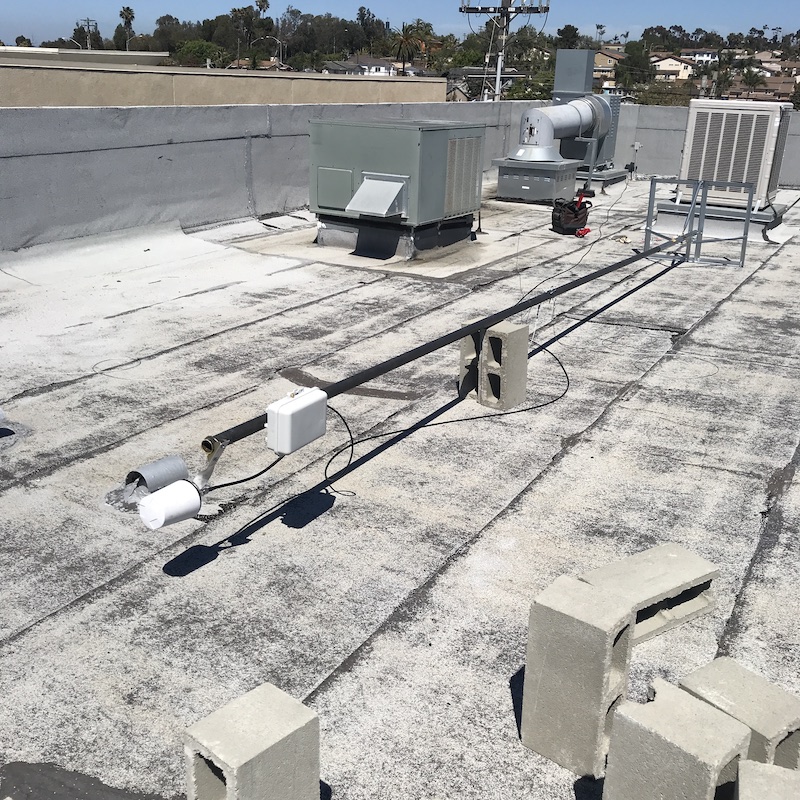Want to get your hotspot up on that tall commercial building, but you’re not sure how to approach the building owner or manager? I’ll walk you through how I do it, including templates and how to talk about Helium with non-crypto enthusiasts. I know, I know. You want to skip forward to right before you tilt up the tower, like this:

Relax, we’ll get there. Let’s go through how that can happen.
First, remember this: Make sure they win. You’re going to win, we both know that. Set that aside and focus on them.
Second, know who you’re dealing with. Is it an owner? A facilities manager? A corporate entity? You’re engaging in business. Do your homework. Be professional.
Third, make sure your agreements are clear and clean. They don’t have to be long 19 page documents detailing every last thing. They do have to be useful for all parties. Get the following in writing: What you’re going to be doing, how much you’re going to pay, and how often you’ll pay out.
Fourth, see number one, above. Think about how this might benefit their business. If you can walk up to the building owner with some way for them to make more money or spend less, you’re 80% of the way to a done deal. Whether they need to track vehicles or people, or weigh inventory, or get temperature alerts, or count how many cars are parked in their lot, there is almost always some way that a LoRa sensor can help out.
You don’t have to have a perfect fit, but if you can show that you care about their business and bottom line, they’ll be a lot more open to your proposal.
Fifth, keep it professional. Don’t plan on setting up something that’ll fall down when it’s windy, or leak when it’s rainy, or fall apart because you used cheap parts. This is a business. Be a professional.
Once you’ve thought about their life and how you can improve it, plan out your first contact with them. Ideally you’ll have someone you both trust in common. It could be a family member or a friend, or it could be a tenant that both you and the building owner trust. If they’re a total stranger, make sure you’ve done your homework on their building (how old is it, how high is it, how many tenants do they have, what’s the average rent in the area, etc). Build up a mental map in your mind about how your placement proposal will benefit them.
Speaking of a proposal, have something written up and ready to hand over. Here’s a short example. The template is here.
LoRa Gateway Proposal – Rooftop Placement
Gristle King Inc (GKI) provides LoRa radio (LOng RAnge) coverage via a small device and antenna installed on a 15’-20’ high mast anchored with a non-penetrating removable roof mount.
A LoRa gateway (Long Range radio and small computer) is used to provide coverage for Internet of Things (IoT) sensors.
IoT can range from remote weighing of ingredients to counting the number of people passing through a doorway to remote sensing of parking spots, temperature and humidity tracking, and more.
Each IoT sensor transmits encrypted information which is received by the gateway, then passed by the gateway to the internet for data processing and visualization. Sensors are typically cheap and long lasting, with life expectancy routinely in years.
A typical gateway installment involves providing a power source and internet connection to the gateway, then customizing a sensor deployment.
In this case, the initial sensors will be scales custom-built to remotely monitor ingredient stock levels.
The gateway provides “permissionless” coverage to anyone who wants to use it, so if other businesses within the coverage area of the gateway want to build or employ their own solutions using LoRa they can do so by buying data credits. Data credits run approximately $5–10/month per sensor.
Gateways typically use about as much power as a light bulb and as much data as a Netflix user.
More on LoRa technology can be found here: https://www.semtech.com/lora
GKI proposes a monthly hosting payment to XXXXXXXX of $XXX/month to use building internet & power. GKI will install the gateway and associated hardware. All installation costs and any damages resulting from the installation to be borne by GKI.
Here are the essentials of a proposal: It should quickly and clearly describe what you’re doing. It should show the businesses owner how they and those around will receive a benefit. It should be low risk for them (no drilling holes in their roof). Finally, it should be boring.
That last one is where most of you stumble. You’re excited about Helium. You want to share how cryptocurrency and the blockchain is changing the world and how much long range coverage you’ll be providing for all these devices (that typically don’t exist yet) and how this is the ground floor, and LET’S DO THIS!
I get it. I’m excited too, but business owners didn’t get to own a building by listening to excited people talk about dreams and the future, and especially about Bitcoin or Doge or.…what was this again, Helium?
Trust me. Keep it boring and practical. Point out where they’ll win. Make sure they DO win. If a business owner can rent out 6 sq ft of their roof for $150/month, that’s $25 a square foot. That’s a win.
Ok, now that you’ve presented your proposal and they’ve signed off on it, you’ll have to connect your Helium Hotspot to its lifeblood: Power, and the internet.
You can go off-grid, which is (depending on where you live) about 3 times as expensive as staying on a hardline. The enormous upside of being off grid is you don’t have to convince the building owner to get into their router and open up port 44158, or plug in to their power, or make any holes in their building in order to run cable. All of those can complicate or upset a deal.
Still, off grid is hard, and expensive. If you can show the building owner that you know what you’re doing, that you’ve terminated ethernet cable before and punched through building envelopes, and that opening up that port on their network is something you can do behind your back with a blindfold, they usually put you in the category of “technical geek who can do anything” and they’ll give you the run of the shop. That opens up your grid-connected options.
What I’m saying in a roundabout way is to make sure you learn a little bit of the language of contracting and network installing. Don’t go in there saying you’re going to run “internet cable”. Don’t say, “I think I might have to drill a hole in your roof, let me go buy a drill.” Don’t ask them if you can “get on their WiFi for a sec”.
Know what you’re talking about. Be a professional. Have the right tools to do a good job. Here’s my list of essential Helium deployment tools if you need some guidance.

This brings me to my last point, which is relationships. I know you want a magic piece of paper that you just throw at a building owner and they toss the roof key back at you and say, “Have at it.” That doesn’t happen. Building owners are just like you; they want to turn a profit and they want to work with people they like and trust. The profit part is straightforward. The next part comes from building relationships.
Show up on time. Be professional. Think about their needs before yours. Try and improve their life. Have fun and be joyful when you work. Always look for positive opportunities where all parties win. Always build the relationship.
That’s the kind of person I’d want putting a [whatever it is you want] on top of my building. Wouldn’t you?
Best of luck with your deployments, and if you need help I’m available for hire.
Rock on! ~Nik@GK

Leave a Reply